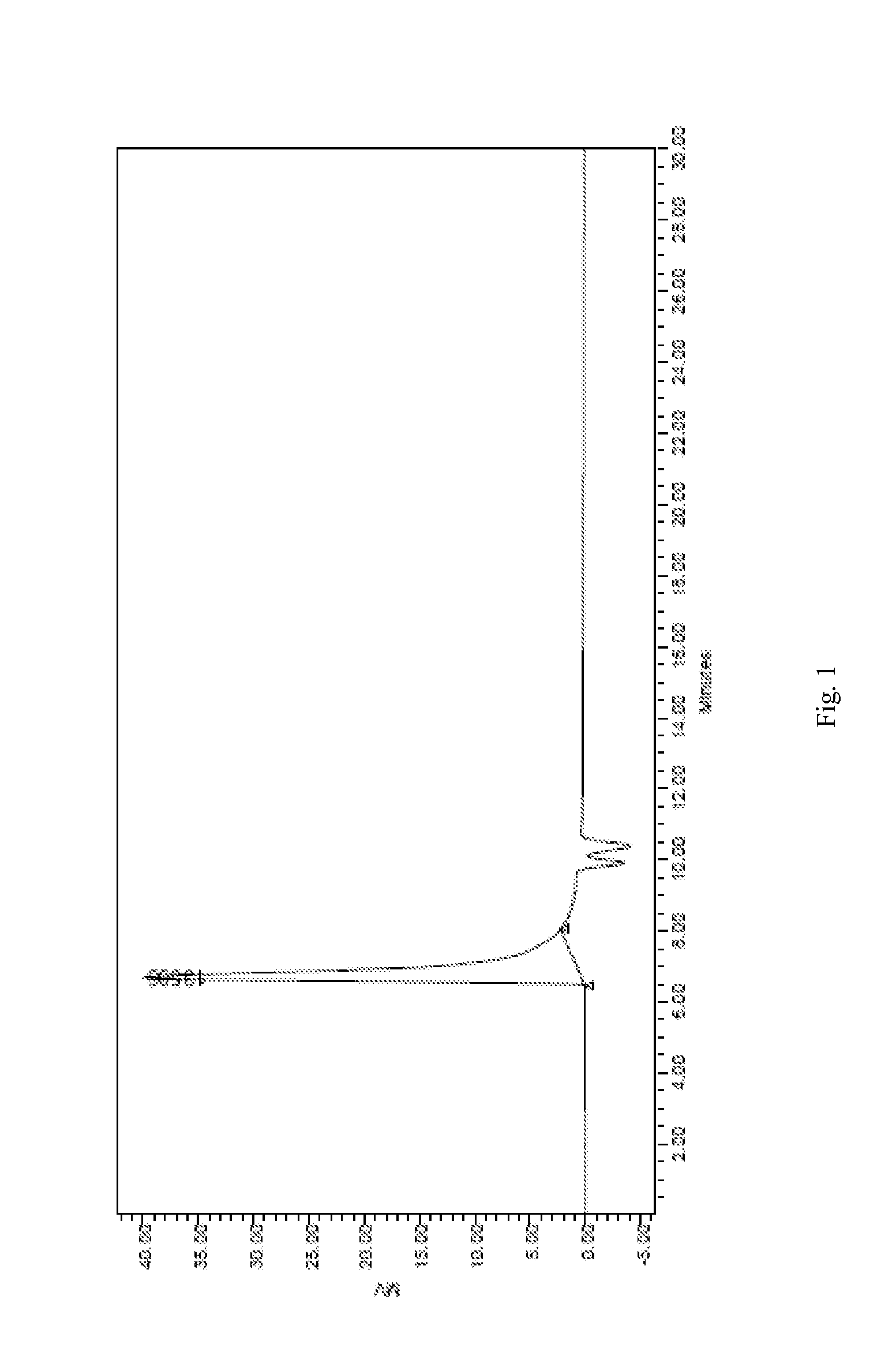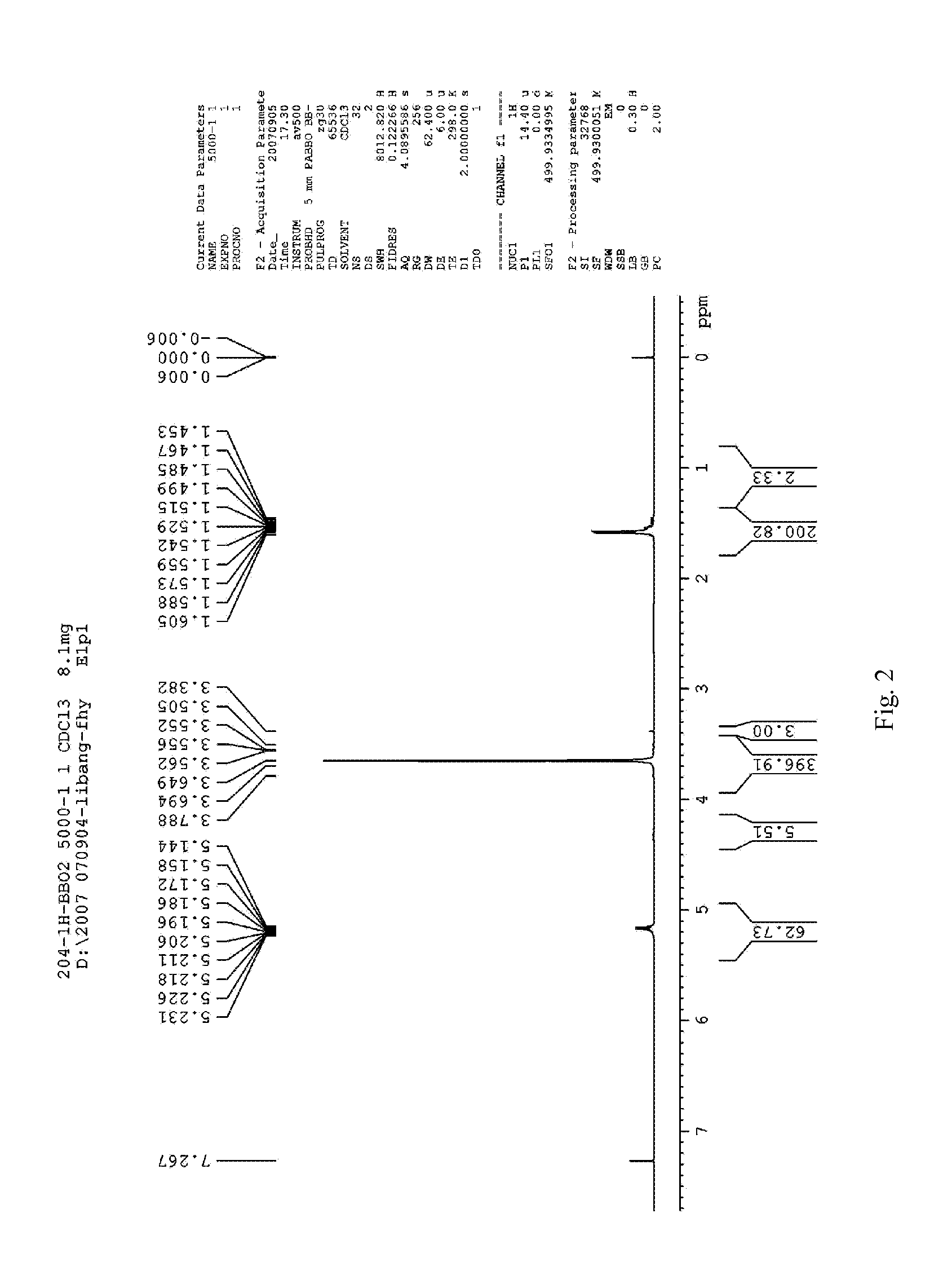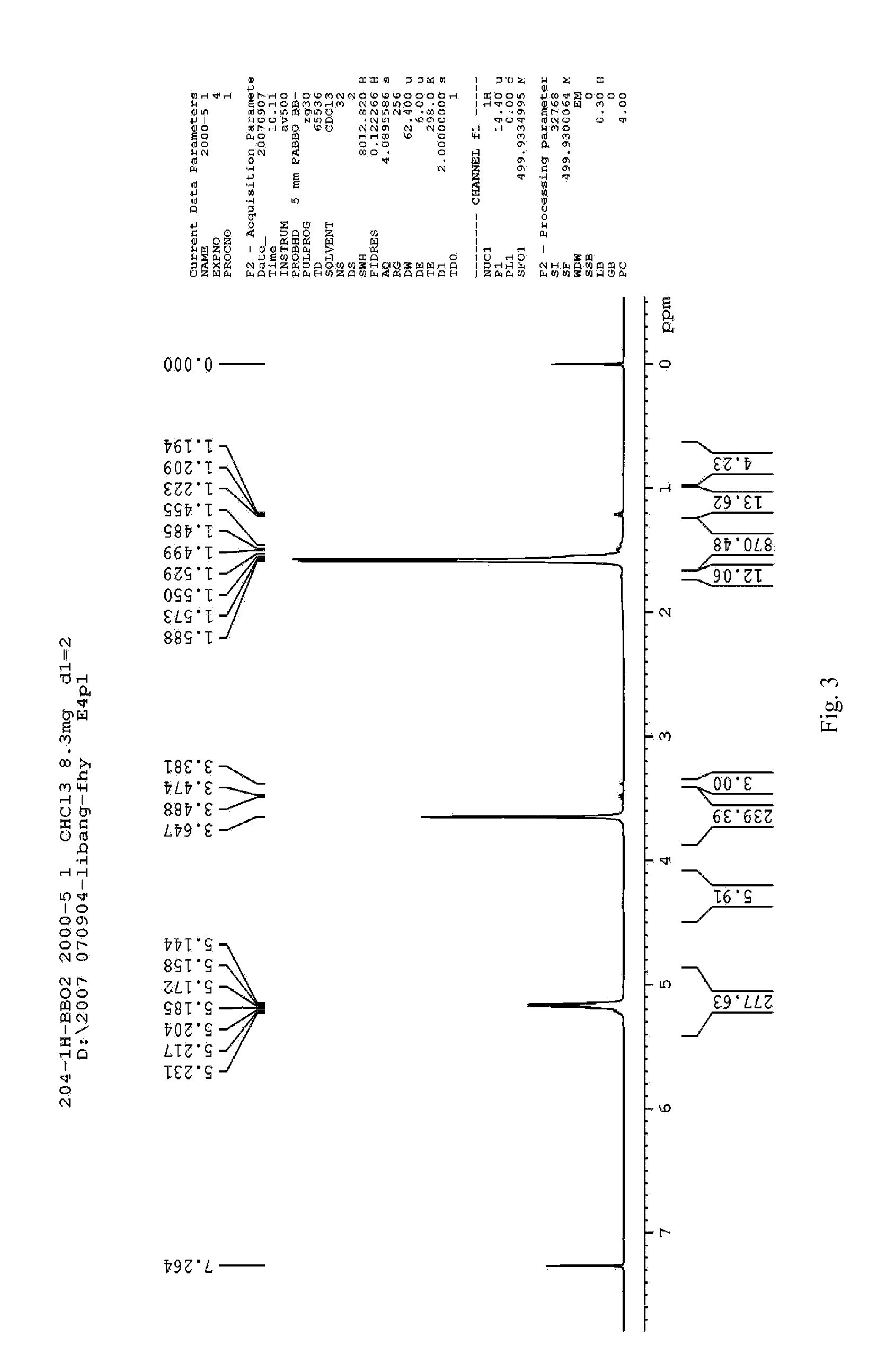Microsphere drug carrier, preparation method, composition and use thereof
a microsphere and drug technology, applied in the field of medical technology, can solve the problems of low difficult to put drugs into the market, non-zero level release of drugs, etc., to achieve controllability of drugs, increase drug encapsulation efficiency and drug loading rate, and increase drug stability
- Summary
- Abstract
- Description
- Claims
- Application Information
AI Technical Summary
Benefits of technology
Problems solved by technology
Method used
Image
Examples
example 1
Preparation of Methoxy End-Capped Polyethylene Glycol-Polylactic Acid Block Copolymer (mPEG-PLA, 10000 / 10000)
[0082]Rate of charge: 4 g of D, L-lactide, 4 g of methoxy end-capped polyethylene glycol (mPEG, Mw=10000), 0.16 g of stannous octoate
Operation:
[0083]D, L-lactide, and mPEG are added into a flask, and then stannous octoate is dropped to form a mixture. The flask is sealed with a plug and vacuumized. Then the mixture is heated to 80° C., dewatered under vacuum degree ≦200 pa for 30 min. Keep the pressure ≦200 pa, and heat up the mixture to 120° C. rapidly with a temperature rising rate of 50° C. / min. After the vacuum is shut off (the flask is still in sealed state), the mixture is continued to be heated up to 170° C., and reacted for 2 h under 10 rpm of mechanical agitation. After finishing the reaction, the reaction product is cooled to room temperature, into which suitable amount of dichloromethane is added to dissolve the product, and then placed overnight. On the next day, ...
example 2
Preparation of Methoxy End-Capped Polyethylene Glycol-Polylactic Acid Block Copolymer (mPEG-PLA, 5000 / 8000)
[0085]Rate of charge: 9 g of D, L-lactide, 5 g of mPEG (Mw=5000), 1 g of stannous octoate
Operation:
[0086]D, L-lactide, and mPEG are added into a flask, and then stannous octoate is dropped to form a mixture. The flask is sealed with a plug and vacuumized. Then the mixture is heated to 60° C., dewatered under vacuum degree ≦150 pa for 30 min. Keep the pressure ≦150 pa, and heat up the mixture to 110° C. rapidly with a temperature rising rate of 50° C. / min. After the vacuum is shut off (the flask is still in sealed state), the mixture is continued to be heated up to 150° C., and reacted for 4 h under 10 rpm of mechanical agitation. After finishing the reaction, the reaction product is cooled to room temperature, into which suitable amount of dichloromethane is added to dissolve the product, and then placed overnight. On the next day, the resulting solution is dropped into about t...
example 3
Preparation of Methoxy End-Capped Polyethylene Glycol-Polylactic Acid Block Copolymer (mPEG-PLA, 2000 / 20000)
[0088]Rate of charge: 10.4 g of D, L-lactide, 1.01 g of mPEG (Mw=2000), 0.26 g of stannous octoate
Operation:
[0089]D, L-lactide, and mPEG are added into a flask, and then stannous octoate is dropped to form a mixture. The flask is sealed with a plug and vacuumized. Then the mixture is heated to 60° C., dewatered under vacuum degree ≦180 pa for 30 min. Keep the pressure ≦180 pa, and heat up the mixture to 110° C. rapidly with a temperature rising rate of 50° C. / min. After the vacuum is shut off (the flask is still in sealed state), the mixture is continued to be heated up to 170° C., and reacted for 4 h under 10 rpm of mechanical agitation. After finishing the reaction, the reaction product is cooled to room temperature, into which suitable amount of dichloromethane is added to dissolve the product, and then placed overnight. On the next day, the solution is dropped into about t...
PUM
 Login to View More
Login to View More Abstract
Description
Claims
Application Information
 Login to View More
Login to View More - R&D
- Intellectual Property
- Life Sciences
- Materials
- Tech Scout
- Unparalleled Data Quality
- Higher Quality Content
- 60% Fewer Hallucinations
Browse by: Latest US Patents, China's latest patents, Technical Efficacy Thesaurus, Application Domain, Technology Topic, Popular Technical Reports.
© 2025 PatSnap. All rights reserved.Legal|Privacy policy|Modern Slavery Act Transparency Statement|Sitemap|About US| Contact US: help@patsnap.com



